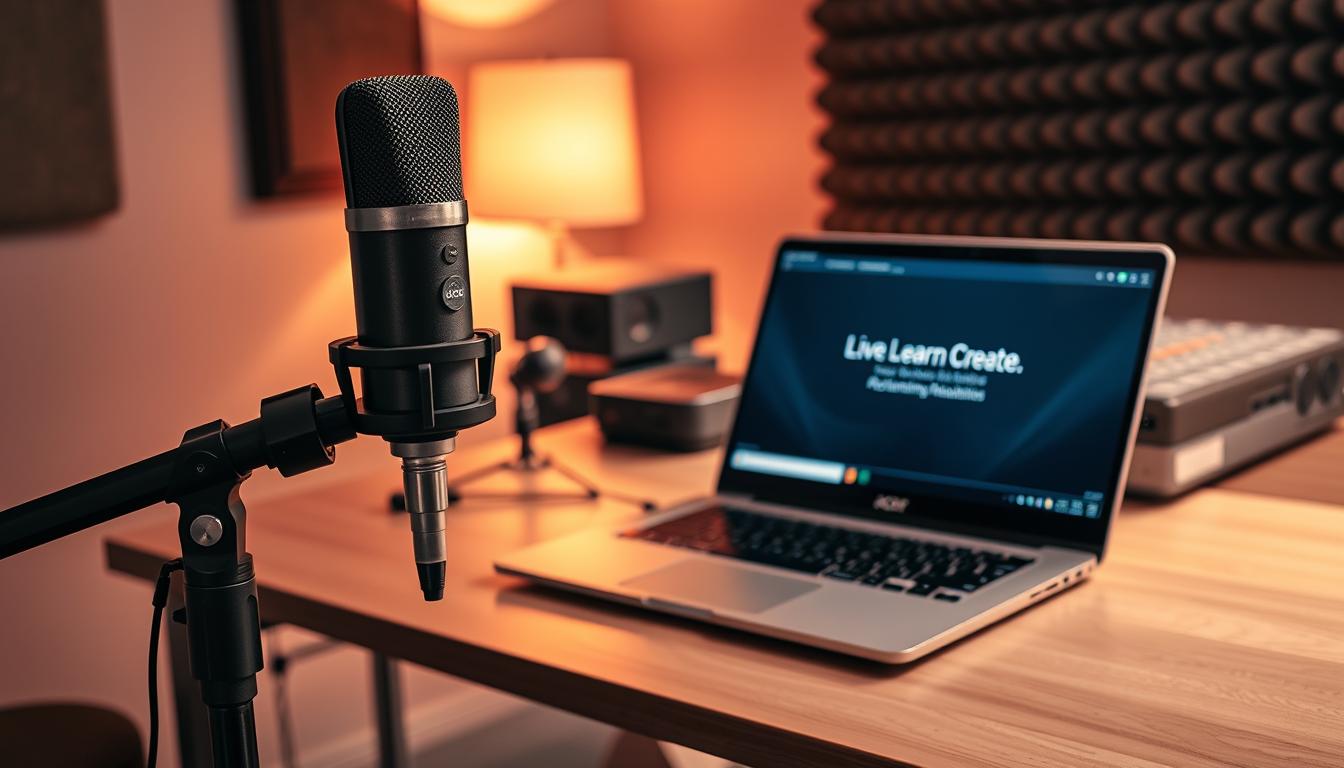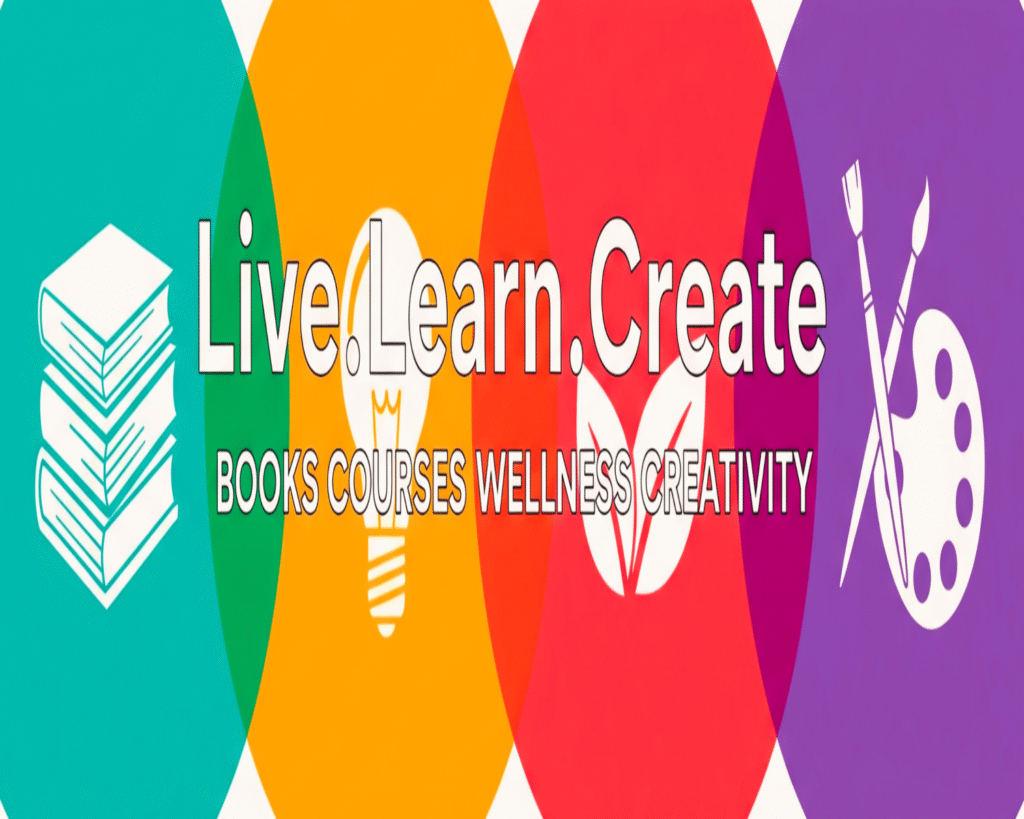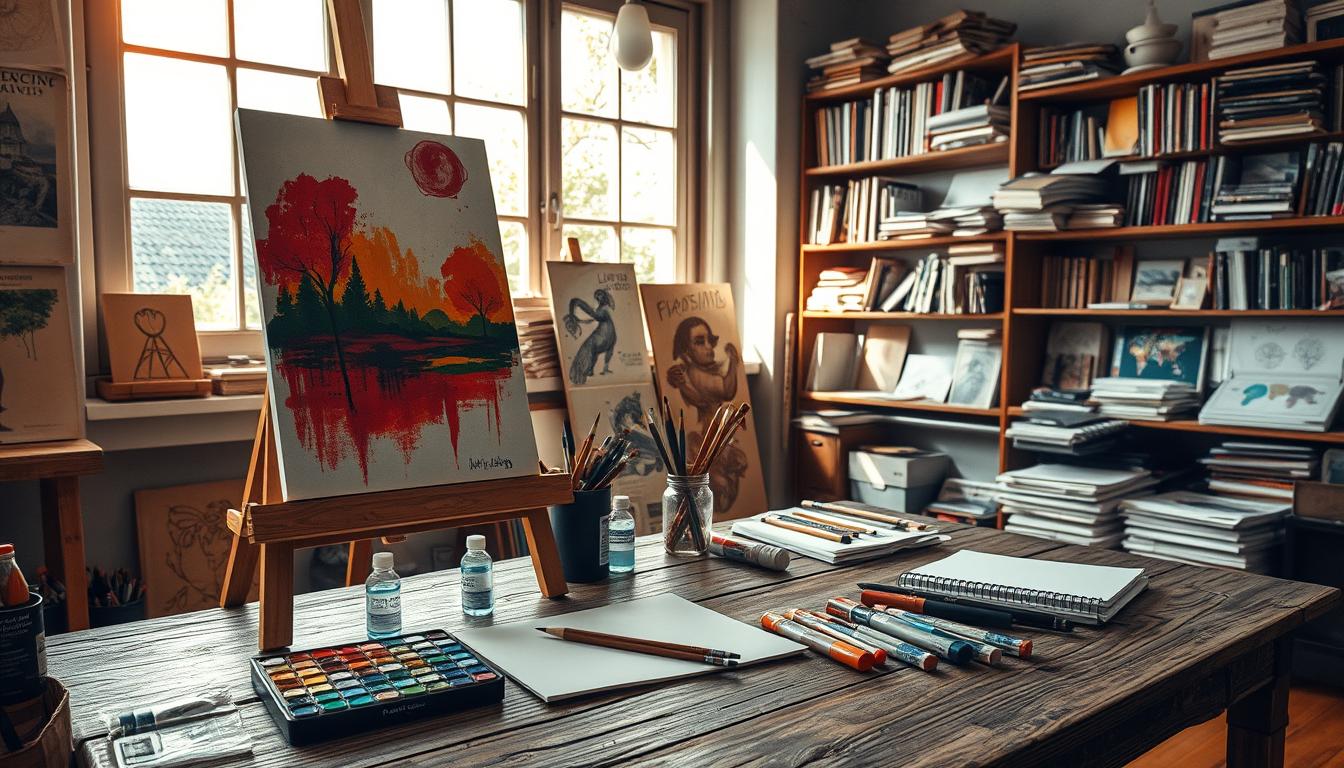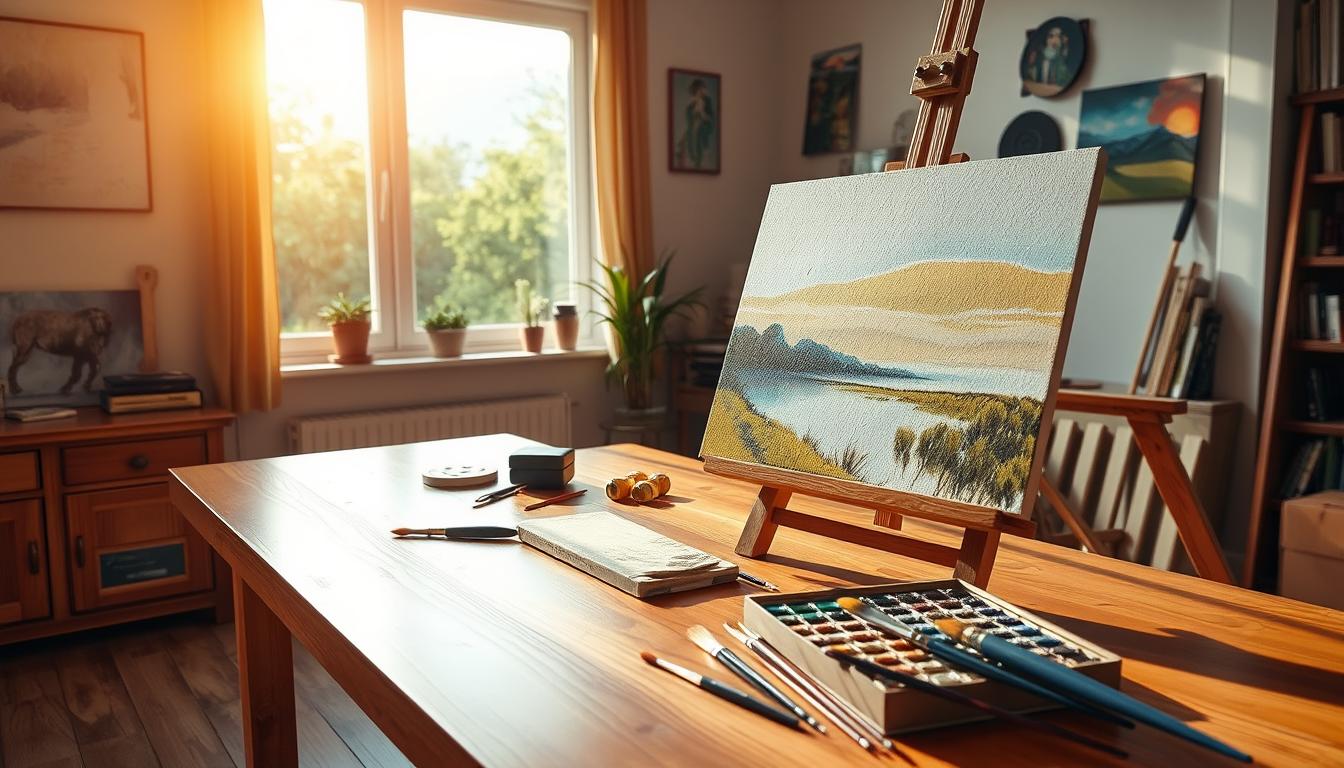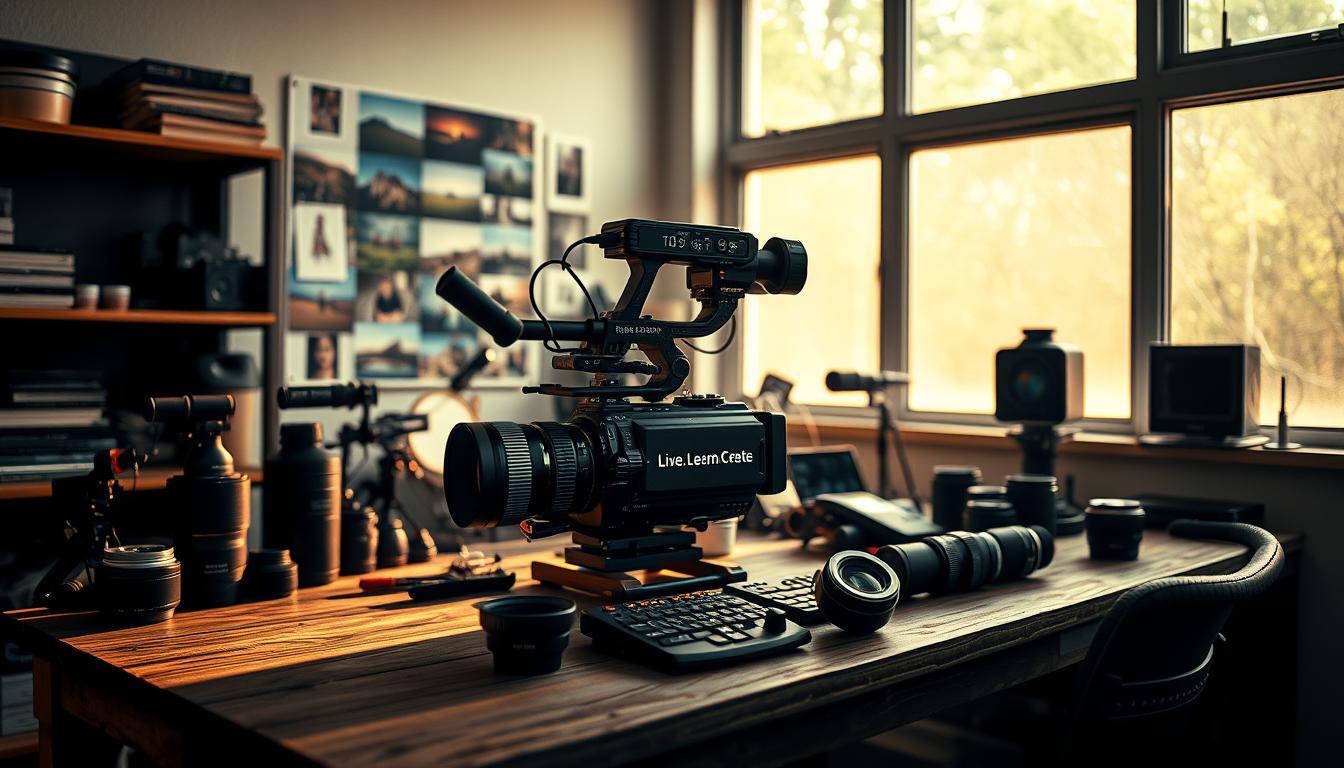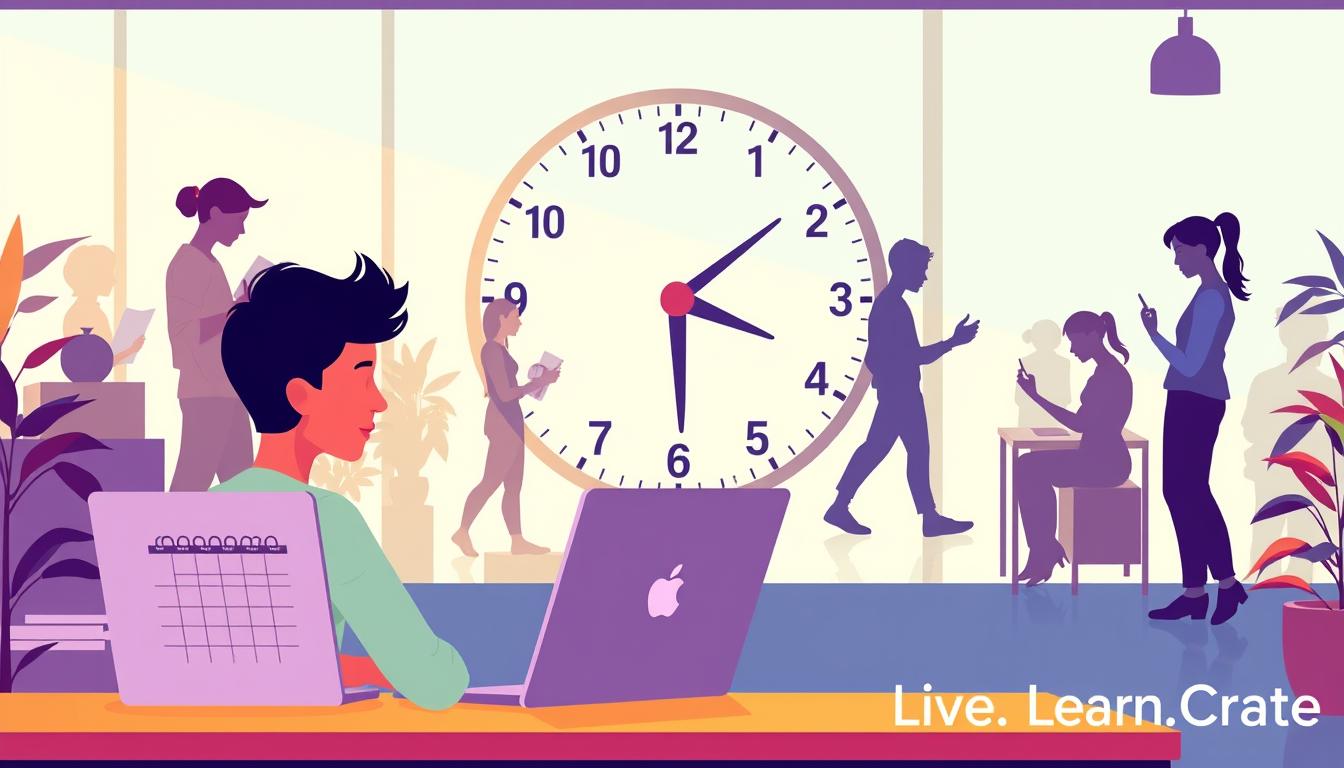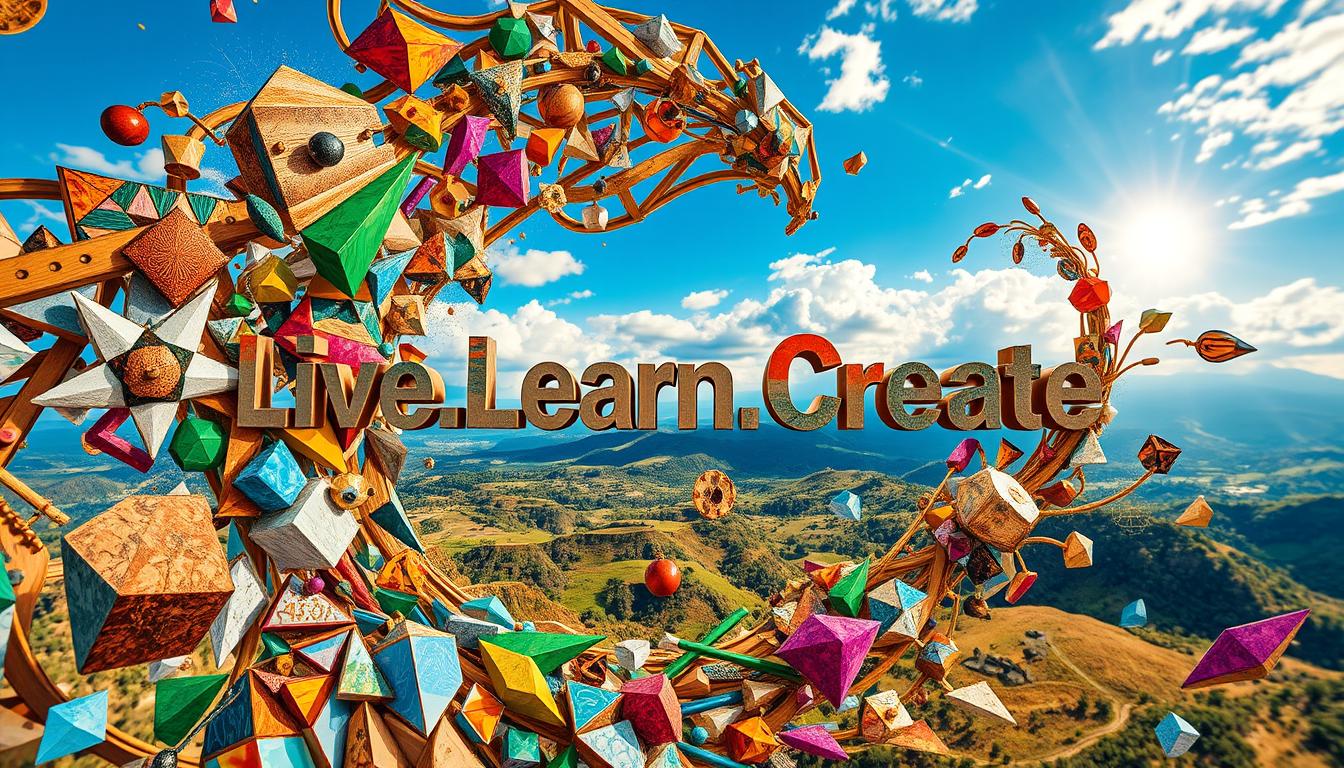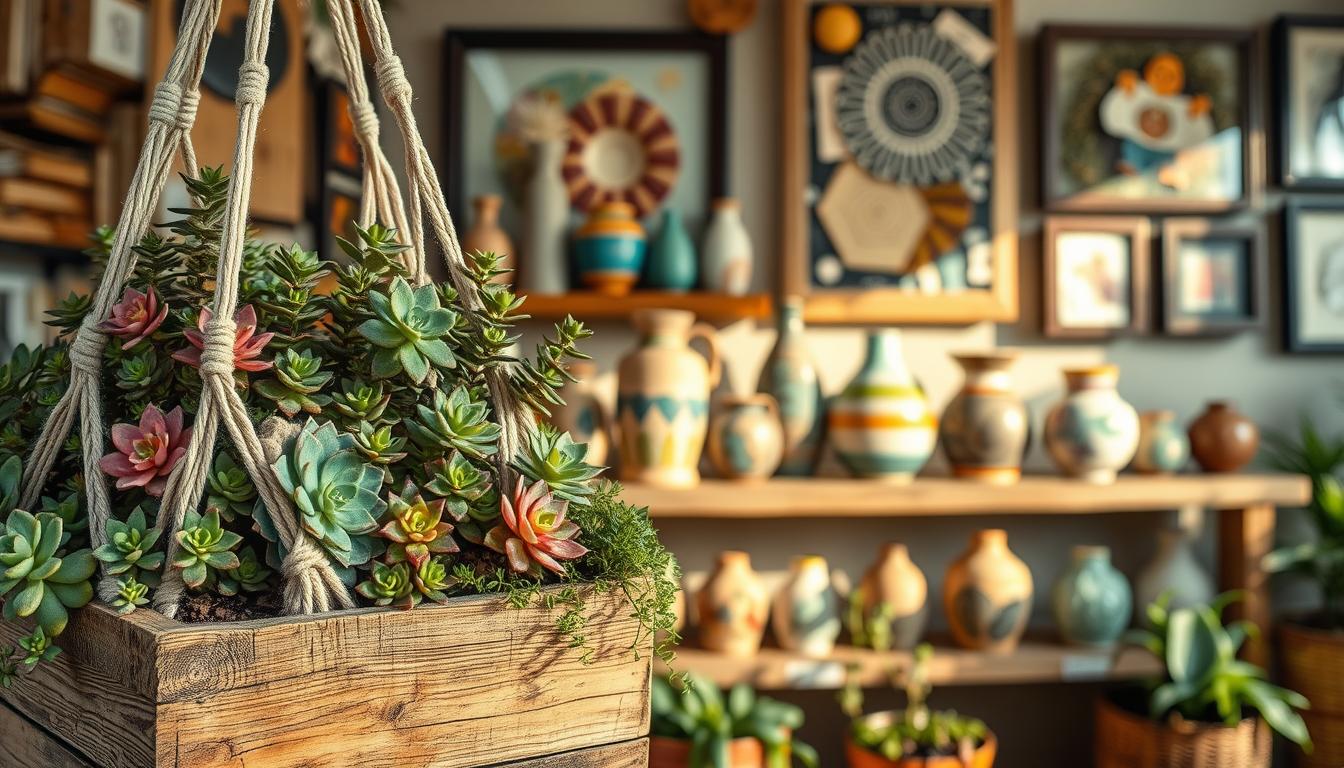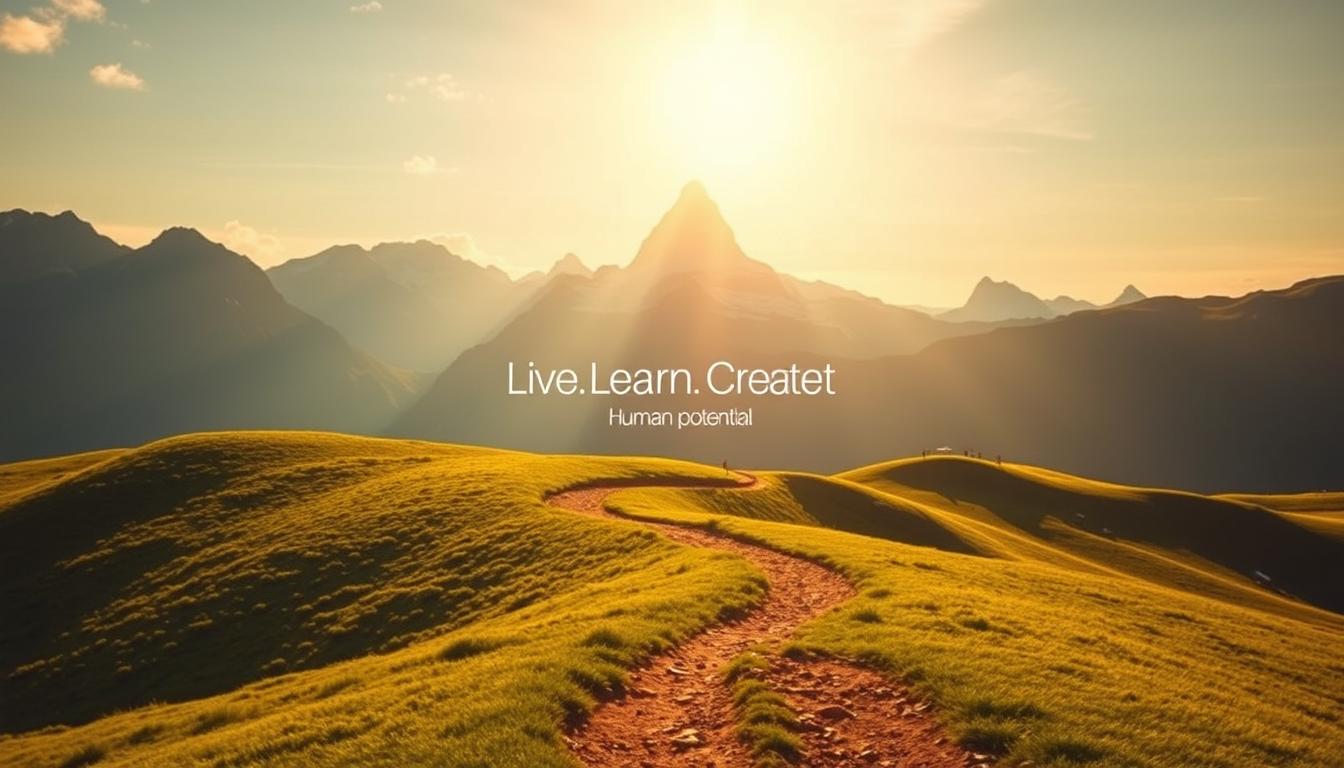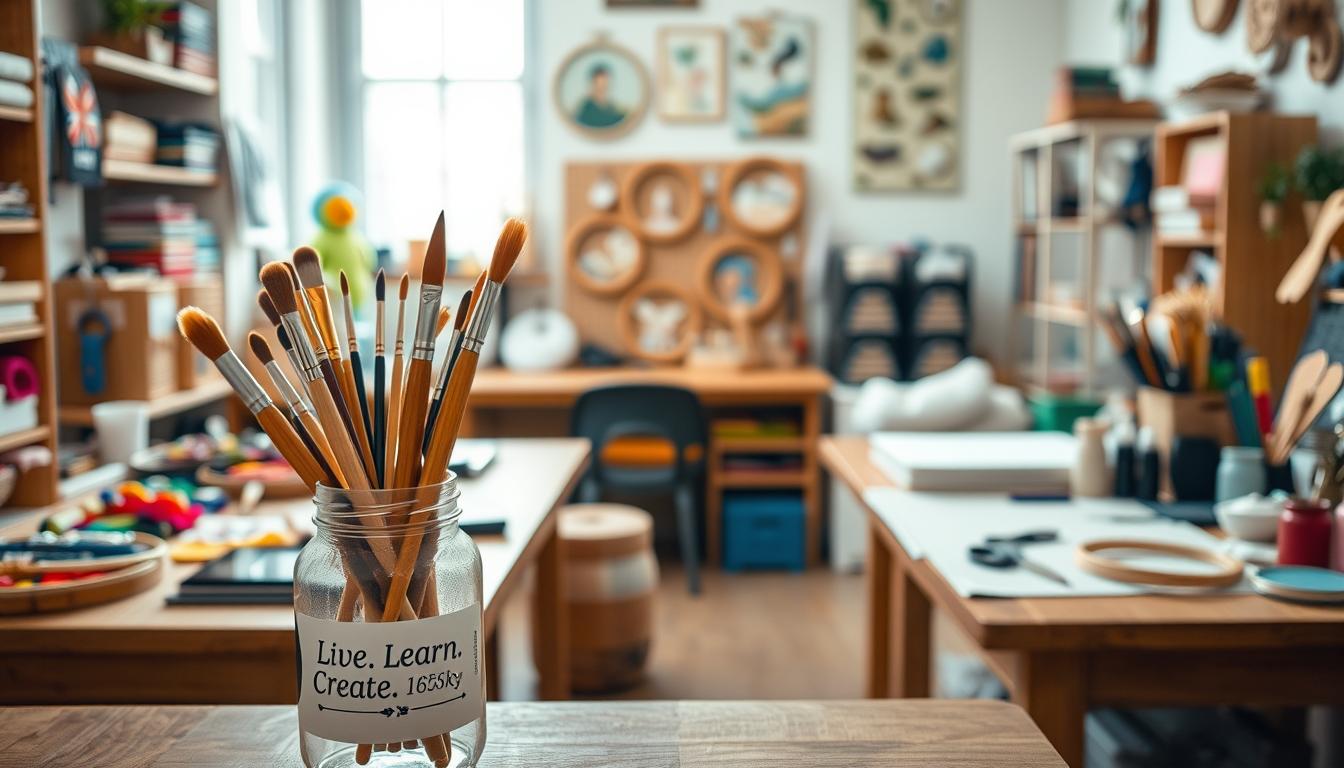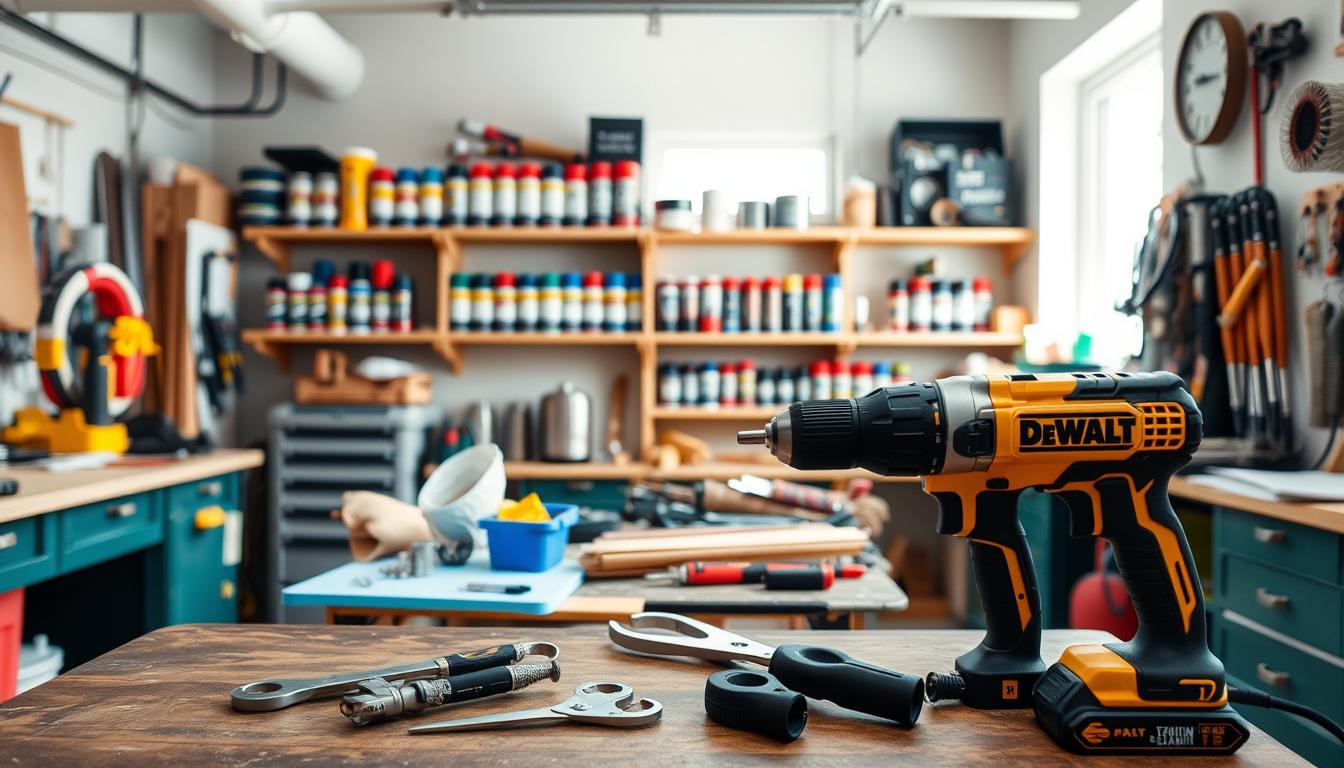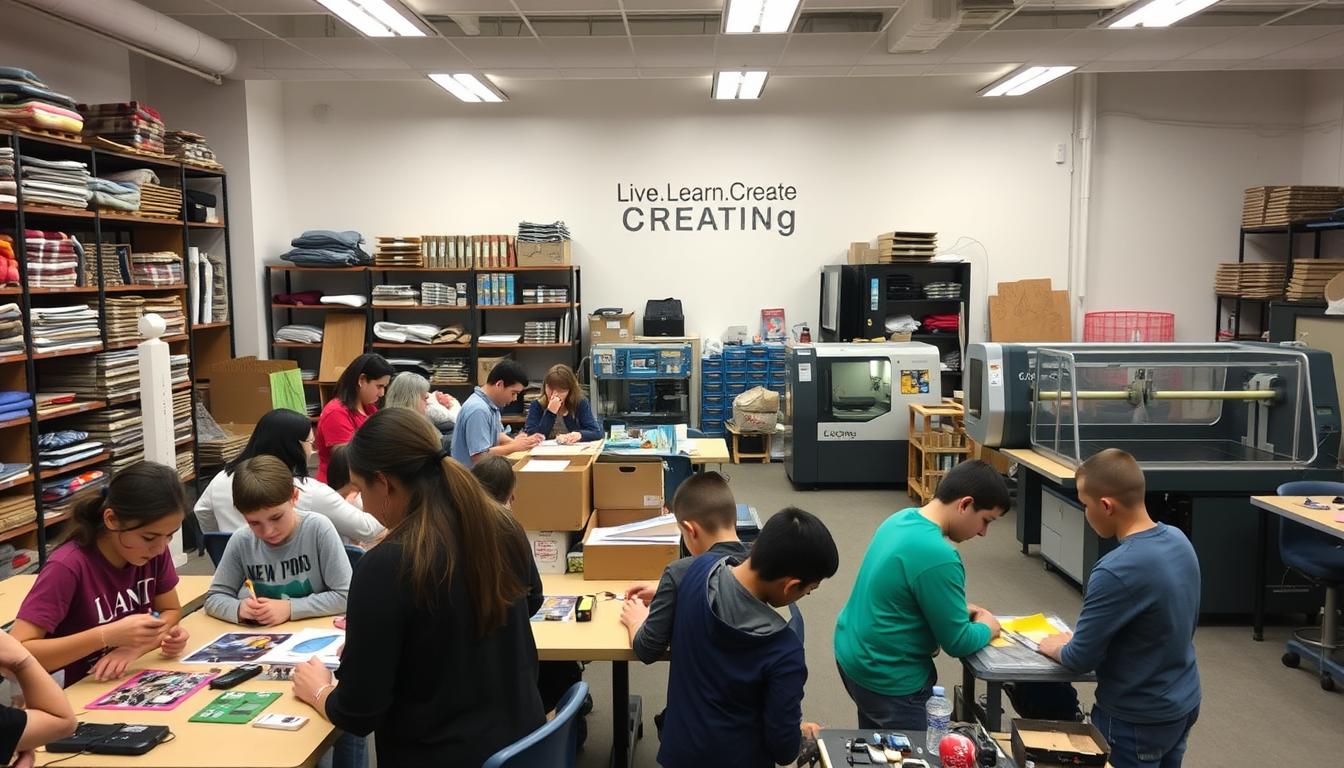Since 2009, Buzzsprout has helped over 300,000 podcasters start their shows. This is a big deal in the world of audio content creation. It shows how popular and powerful podcasting is for sharing ideas and connecting with people.
If you’re new to podcasting or want to improve your show, we’ve got you covered. Our guide will help you make audio content that your listeners will love. For more tips and resources, check out https://livelearncreate.blog/blog/ and dive deeper into podcasting.
Key Takeaways
- Understand the basics of creating a successful podcast
- Learn how to plan and structure your podcast episodes
- Discover tips for improving your podcast’s audio quality
- Explore strategies for growing your podcast’s audience
- Find out how to maintain consistency and engagement
Understanding the Basics of Podcasting
Before you start your podcasting journey, let’s explore what podcasting is all about. Podcasting is a way to share your ideas, passions, and expertise with people all over the world through audio content.
What is Podcasting?
Podcasting means creating and sharing audio content in episodes. Listeners can subscribe and download or stream these episodes. It’s a popular way to connect with people because it’s easy to use and personal.
You can talk about anything you love, from science to fiction. This makes podcasting very diverse, with many different topics and audiences.
The History of Podcasting
Podcasting started in the early 2000s. It began as simple audio blogging but has grown a lot. Thanks to technology and smartphones, making and listening to podcasts is now easier than ever.
Today, new podcasts are launched every day. They cover a wide range of topics. This shows how powerful podcasting is for sharing ideas and connecting with others.
Different Types of Podcasts
There are many types of podcasts, like interviews, stories, and educational shows. The type you choose depends on what you want to do, who you want to reach, and what you enjoy.
- Interview-style podcasts feature conversations with guests, offering different views and insights.
- Narrative podcasts tell stories, aiming to entertain or educate.
- Educational podcasts teach listeners about specific subjects or skills.
Knowing these basics is key as you start your podcasting journey. Understanding what podcasting is, its history, and the different types helps you make good choices. It also helps you connect with your audience better.
Setting Your Podcast Goals
Starting a podcast means setting clear goals. Buzzsprout says defining your podcast’s concept is key to attracting the right listeners. This step keeps you focused and ensures your content meets your audience’s needs.
Define Your Target Audience
Knowing who listens to your podcast is crucial. Think about their interests, challenges, and what they’re looking for. This helps you create content that speaks directly to them.
To understand your audience, create listener personas. These are fictional profiles of your ideal listeners. They include demographic info, interests, and behaviors. Having a clear idea of your audience helps you make a podcast that engages them.
Identify Your Podcast’s Mission
Your podcast’s mission is its purpose. It’s the core message you want to share with your audience. Knowing your mission keeps you on track and ensures your content aligns with your vision.
To find your podcast’s mission, ask yourself a few questions. What’s the main theme of your podcast? What value do you want to provide? What makes your podcast unique? Answering these questions helps you create a clear mission statement.
Establish Success Metrics
To measure your podcast’s success, set clear metrics. These could be downloads, listener engagement, or feedback. Tracking these metrics helps you see what works and what needs improvement.
Some important metrics to track include:
- Number of downloads per episode
- Listener engagement on social media
- Email feedback or comments
- Subscriber growth rate
| Metric | Description | Why It Matters |
|---|---|---|
| Downloads | Total number of times your podcast is downloaded | Indicates the reach of your podcast |
| Engagement | Likes, shares, and comments on social media | Shows how interactive your audience is |
| Feedback | Email or comment responses from listeners | Provides insights into listener satisfaction |
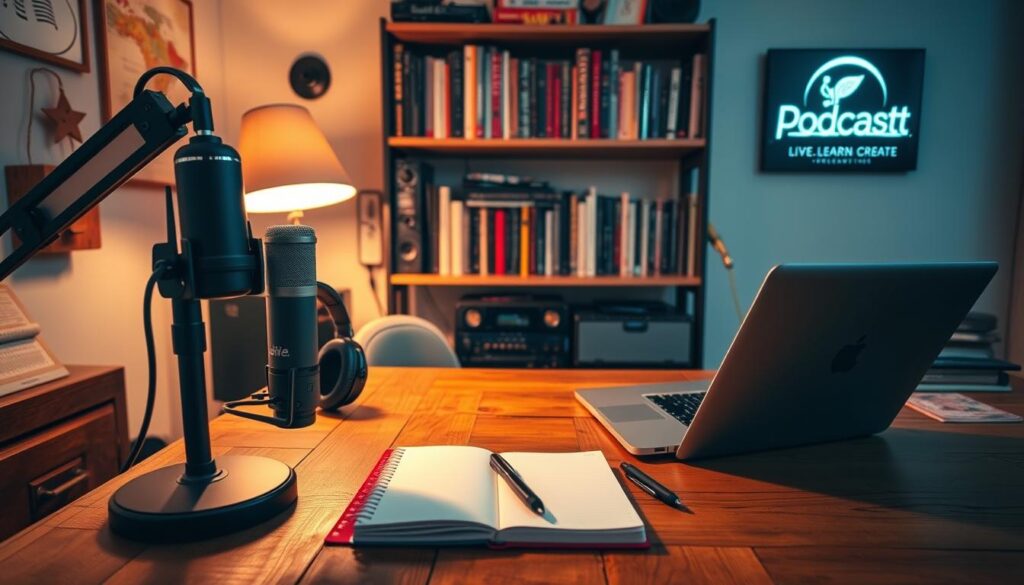
By setting clear goals, defining your audience, identifying your mission, and tracking success, you’re on the path to a successful podcast. This foundational work will guide your content and help you build a loyal listener base.
Choosing the Right Format
Picking the right format for your podcast is key to making content that grabs your audience’s attention. The format you choose affects your production, how listeners engage, and your podcast’s success.
Solo, Interview, or Co-hosted?
First, decide on your podcast’s style. You could go solo, sharing your knowledge directly with listeners. Or, you might choose an interview format, where you talk to guests and share different views. A co-hosted format offers lively discussions between hosts, drawing in your audience.
Serialized vs. Standalone Episodes
Next, think about whether your podcast will have serialized or standalone episodes. Serialized podcasts follow a story or theme over several episodes, keeping listeners hooked. Standalone episodes, on the other hand, are self-contained, letting listeners start at any time.
Suggested Lengths for Various Formats
The length of your podcast episodes can change based on your format. Here’s a look at typical lengths for different formats:
| Format | Typical Length | Description |
|---|---|---|
| Solo | 20-45 minutes | Ideal for in-depth analysis or storytelling. |
| Interview | 30-60 minutes | Allows for meaningful conversations with guests. |
| Co-hosted | 30-60 minutes | Facilitates engaging discussions between hosts. |
| Serialized | Varies (often 20-45 minutes) | Depends on the story or theme being explored. |
Understanding the different formats and their effects helps you choose the best one for your podcasting goals and your audience’s tastes.
Selecting Your Podcast Equipment
Choosing the right podcast equipment can seem hard, but it’s key to a great podcast. The right gear helps you make audio that keeps listeners coming back.
Essential Recording Devices
You’ll need a few important pieces to start recording. These are a good microphone, headphones, and a device to record your podcast.
Microphones are crucial. You might like the Samson Q2U or Rode NT-USB for their clear sound.
 with a sleek design and a pop filter for clear, crisp audio. Beside it, a [Focusrite Scarlett 2i2 USB Audio Interface](https://www.amazon.com/Focusrite-Scarlett-Audio-Interface-Tools/dp/B01E6T56EA) for professional-level sound recording. In the middle, a [Blue Snowball iCE Condenser Microphone](https://www.amazon.com/Blue-Snowball-iCE-Condenser-Microphone/dp/B014PYGTUQ) on a sturdy, adjustable arm. Behind, a pair of [Sony MDR-7506 Professional Large Diaphragm Headphones](https://www.amazon.com/Sony-MDR7506-Professional-Diaphragm-Headphone/dp/B000AJIF4E) for monitoring. The scene is bathed in warm, natural lighting, creating a cozy, inviting atmosphere for the "Live.Learn.Create" brand. A professional podcasting setup on a modern, minimalist desk. In the foreground, a high-quality [Rode NT-USB Mini USB Microphone](https://www.amazon.com/Rode-NT-USB-Mini-Studio-Quality/dp/B07XTQZJ28) with a sleek design and a pop filter for clear, crisp audio. Beside it, a [Focusrite Scarlett 2i2 USB Audio Interface](https://www.amazon.com/Focusrite-Scarlett-Audio-Interface-Tools/dp/B01E6T56EA) for professional-level sound recording. In the middle, a [Blue Snowball iCE Condenser Microphone](https://www.amazon.com/Blue-Snowball-iCE-Condenser-Microphone/dp/B014PYGTUQ) on a sturdy, adjustable arm. Behind, a pair of [Sony MDR-7506 Professional Large Diaphragm Headphones](https://www.amazon.com/Sony-MDR7506-Professional-Diaphragm-Headphone/dp/B000AJIF4E) for monitoring. The scene is bathed in warm, natural lighting, creating a cozy, inviting atmosphere for the "Live.Learn.Create" brand.](https://livelearncreate.blog/wp-content/uploads/2025/08/A-professional-podcasting-setup-on-a-modern-minimalist-desk.-In-the-foreground-a-high-quality-1024x585.jpeg)
Microphones: Types and Recommendations
There are many microphones to pick from, each with its own benefits. USB microphones are perfect for beginners because they’re simple to use. For better sound, XLR microphones are a good choice for those who want more.
| Microphone Type | Pros | Cons |
|---|---|---|
| USB Microphones | Easy to use, plug-and-play | Limited flexibility |
| XLR Microphones | High-quality audio, flexible | Requires additional equipment, more complex setup |
Recording Software Options
After getting your microphone and headphones, you’ll need software to record and edit. GarageBand is great for beginners, while Adobe Audition is better for pros.
- GarageBand: User-friendly, free for Mac users
- Adobe Audition: Advanced features, ideal for professionals
- Audacity: Free, open-source, and feature-rich
Choosing the right software and equipment can make your podcast sound better. This will improve the listening experience for your audience.
Planning Your Content Strategy
A content strategy is key to a successful podcast. It organizes your ideas and delivers your message well to listeners.
Developing Episode Ideas
Start by brainstorming topics that interest your audience. Think about what they care about and what they find valuable or fun.
- Identify trending topics in your niche.
- Conduct surveys or polls to understand listener preferences.
- Repurpose existing content, like blog posts or videos, into podcast episodes.
Creating a Content Calendar
A content calendar is vital for organizing your podcast. It keeps your episodes consistent, which keeps listeners coming back.
Plan your episodes ahead of time. Choose how often you’ll release new episodes and schedule them.
| Episode Number | Topic | Guest | Release Date |
|---|---|---|---|
| 1 | Introduction to Podcasting | – | 2023-04-01 |
| 2 | Equipment for Podcasting | Expert Interview | 2023-04-08 |
| 3 | Content Strategy | – | 2023-04-15 |
Balancing Topics and Guest Interviews
Mixing different topics and guest interviews keeps your podcast interesting. It’s important to balance solo episodes, interviews, and co-hosted talks.
Tips for Balancing Content:
- Alternate between solo episodes and interviews.
- Use a mix of evergreen and timely topics.
- Consider having a recurring segment or theme.
By planning your content well, you can keep your podcast engaging and appealing to your audience.
Recording Your First Episode
Getting ready to record your first podcast? Make sure you have the right setup and skills. This means creating a quiet space, practicing your voice, and being ready for any tech problems.
Setting Up Your Recording Space
For top-notch audio, your recording space needs to be perfect. Pick a quiet room with little background noise. Use soundproofing or DIY solutions to cut down echo. A good microphone and headphones are key podcast equipment for a pro sound.
, a [Focusrite Scarlett 2i2 Audio Interface](https://www.amazon.com/Focusrite-Scarlett-Audio-Interface-Tools/dp/B07QW4ZXYY), a sturdy [Blue Microphones Radius III Shock Mount](https://www.amazon.com/Blue-Microphones-Radius-III-Shock/dp/B014CXMCCA), and a [Neewer NW-35 Suspension Boom Scissor Arm Stand](https://www.amazon.com/Neewer-Suspension-Microphone-Adjustable-Mounting/dp/B00DY1F2CS). Strategically placed studio lighting, a clean backdrop, and a sleek Live.Learn.Create-branded desk create a polished, inspiring atmosphere for recording your first podcast episode. Podcast equipment: A meticulously arranged studio setup with a professional-grade [Rode Podcaster USB Microphone](https://www.amazon.com/Rode-Podcaster-USB-Dynamic-Microphone/dp/B000JM46FY), a [Focusrite Scarlett 2i2 Audio Interface](https://www.amazon.com/Focusrite-Scarlett-Audio-Interface-Tools/dp/B07QW4ZXYY), a sturdy [Blue Microphones Radius III Shock Mount](https://www.amazon.com/Blue-Microphones-Radius-III-Shock/dp/B014CXMCCA), and a [Neewer NW-35 Suspension Boom Scissor Arm Stand](https://www.amazon.com/Neewer-Suspension-Microphone-Adjustable-Mounting/dp/B00DY1F2CS). Strategically placed studio lighting, a clean backdrop, and a sleek Live.Learn.Create-branded desk create a polished, inspiring atmosphere for recording your first podcast episode.](https://livelearncreate.blog/wp-content/uploads/2025/08/Podcast-equipment-A-meticulously-arranged-studio-setup-with-a-professional-grade-Rode-1024x585.jpeg)
Tips for Effective Voice Delivery
Good voice delivery is essential for keeping your listeners hooked. Speak clearly and at a steady pace. Do some voice warm-ups before you start. Record in front of a mirror or with a friend to relax and sound natural. Aim for a conversational tone that feels like a real chat.
- Speak clearly and at a moderate pace.
- Warm up your voice before recording.
- Record in a relaxed and natural tone.
Troubleshooting Common Issues
Technical problems can pop up, even with prep. Know how to fix common issues like background noise or audio distortion. Learn your recording software well and have a backup plan, like another device or location.
With the right podcasting tips and preparation, your first episode will be a hit. It will set the stage for your podcast’s success.
Editing Your Podcast
After recording your podcast, it’s time to edit. Editing makes your podcast sound professional and keeps listeners interested. It’s a key step in making your podcast great.
To edit, you need the right podcast editing software. Audacity is free and easy to use. Adobe Audition offers more features for a fee.
Popular Editing Software
Choose software based on your needs and skill. Audacity is perfect for beginners. Adobe Audition is for those with more experience or a bigger budget.
- Audacity: A free, open-source option ideal for beginners.
- Adobe Audition: A professional-grade tool with advanced features.
- GarageBand: A user-friendly option for Mac users.
Basic Editing Techniques
Basic editing removes mistakes and adjusts volume. Start by listening to your recording and finding areas to improve.
Tips for effective editing include:
- Removing unnecessary pauses or filler words.
- Adjusting volume levels for consistency.
- Using noise reduction tools to minimize background noise.
Adding Music and Sound Effects
Music and sound effects make your podcast more engaging. Choose elements that fit your content and brand.
When adding music or sound effects, make sure they’re not too loud. Use them to transition between segments or highlight important points.
Mastering podcast editing basics can greatly improve your show. It will keep your audience coming back for more.
Designing Compelling Cover Art
Creating compelling cover art is key in podcast promotion. It shows the tone and theme of your show. Your podcast’s cover art is often the first thing people see, making it very important.
Importance of Visual Branding
Visual branding helps your podcast stand out in a crowded market. It’s not just about looks; it’s about showing what your podcast is about quickly. Good visual branding builds recognition and can make people want to listen.
Key aspects of visual branding include:
- Color scheme: Reflecting the mood and tone of your podcast.
- Typography: Choosing fonts that are readable and align with your podcast’s personality.
- Imagery: Using images or graphics that resonate with your podcast’s theme.
Tools for Creating Cover Art
You don’t need to be a pro to make great cover art. Many tools are available for all skill levels.
| Tool | Description | Skill Level |
|---|---|---|
| Canva | A user-friendly graphic design platform with numerous templates. | Beginner |
| Adobe Illustrator | A powerful vector graphics editor ideal for complex designs. | Advanced |
| GIMP | A free and open-source raster graphics editor. | Intermediate |
Best Practices for Podcast Graphics
When designing your podcast cover art, keep these best practices in mind. They help make sure your graphics are effective and meet platform requirements.
Design Tips:
- Ensure your cover art is square and at least 1400 x 1400 pixels.
- Use high-contrast colors to make your title and graphics stand out.
- Avoid too much text; focus on key information like your podcast name.
By focusing on these elements, you can create cover art that attracts listeners and represents your brand well in the podcasting world.
![]()
Navigating Hosting and Distribution
After making your podcast, it’s time to host and share it. You need to pick a good podcast host. This host will send your podcast to big places like Apple Podcasts and Spotify.
What is a Podcast Host?
A podcast host keeps your podcast files safe and lets listeners find them. It’s like your podcast’s home on the internet. Look for a host that offers enough space, bandwidth, and support.
Top Hosting Platforms in the Market
There are many podcasting platforms out there. Each one has special features and prices. Here are some of the best ones:
- Buzzsprout
- Libsyn
- Podbean
Let’s look at what these platforms offer in the table below:
| Platform | Storage Space | Bandwidth | Starting Price |
|---|---|---|---|
| Buzzsprout | 2 GB (Free) | Unlimited | $12/month |
| Libsyn | 50 MB (Basic) | 250 MB (Basic) | $5/month |
| Podbean | 5 GB (Free) | 100 GB (Free) | $3/month |
Distributing to Podcast Directories
Once you pick a podcast host, you’ll share your podcast with big places. You’ll send your podcast’s RSS feed to Apple Podcasts, Spotify, and Google Podcasts. Your host will help you with this.
Knowing how to host and share your podcast helps it reach more people. It makes sure your podcast is easy to find on different platforms.
Promoting Your Podcast
Effective podcast promotion needs a mix of social media, collaborations, and engaging with your audience. Growing your listener base requires a multi-faceted approach. Use different channels and strategies to reach more people.
Utilizing Social Media Effectively
Social media is a powerful tool for promoting your podcast. Share engaging content on various platforms to reach more people. Focus on platforms where your target audience is most active, like Twitter, Instagram, Facebook, or LinkedIn.
To make the most of social media, follow these tips:
- Create eye-catching graphics and promotional materials.
- Share snippets or teasers from your episodes.
- Engage with your followers by responding to comments and messages.
- Use relevant hashtags to increase visibility.
![A vibrant, professional-looking podcast microphone and headphones sit atop a sleek desk, bathed in warm, studio lighting. In the background, a bold "Live.Learn.Create" logo [Amazon link] is prominently displayed on a stylish backdrop, conveying a sense of branding and promotion. The foreground showcases a high-quality [Amazon link] USB condenser microphone and a pair of [Amazon link] over-ear headphones, symbolizing the tools of the podcasting trade. The overall scene evokes a sophisticated, well-equipped podcasting setup, ready to captivate and engage listeners. A vibrant, professional-looking podcast microphone and headphones sit atop a sleek desk, bathed in warm, studio lighting. In the background, a bold "Live.Learn.Create" logo [Amazon link] is prominently displayed on a stylish backdrop, conveying a sense of branding and promotion. The foreground showcases a high-quality [Amazon link] USB condenser microphone and a pair of [Amazon link] over-ear headphones, symbolizing the tools of the podcasting trade. The overall scene evokes a sophisticated, well-equipped podcasting setup, ready to captivate and engage listeners.](https://livelearncreate.blog/wp-content/uploads/2025/08/A-vibrant-professional-looking-podcast-microphone-and-headphones-sit-atop-a-sleek-desk-bathed-1024x585.jpeg)
Collaborating with Other Podcasters
Collaborating with other podcasters is a great way to find new listeners. Guesting on other shows or hosting guests on yours can tap into new audiences. It also helps build your credibility in the podcasting world.
As Tim Ferriss, a well-known podcaster, said,
“The key is to find ways to create value for others, and in doing so, create value for yourself.”
This idea is especially true for collaborations.
Engaging with Your Audience
Engaging with your audience is key to building a loyal fan base. Ask questions, ask for reviews, and respond to comments. This two-way communication builds a community around your podcast.
Here are some ways to improve audience engagement:
- Host Q&A sessions or live episodes.
- Create a private Facebook group or community for your listeners.
- Share behind-the-scenes content to give your audience a deeper look into your podcasting process.
By using these strategies, you can create a strong promotional plan. This plan will not only grow your audience but also build a loyal community around your podcast.
Monetizing Your Podcast
As your podcast gets more popular, it’s time to think about making money. You can find many ways to earn money that will help your podcast grow. This will not only help financially but also make your podcast more valuable.
Exploring Sponsorship Opportunities
Sponsorship is a common way to make money from podcasts. It means working with brands that fit your podcast’s theme and values. To get sponsors, you need to show how many people listen and how engaged they are. You can do this by:
- Building a big and active audience
- Making content that speaks to your listeners
- Highlighting what makes your podcast special
Types of Sponsorships:
| Type | Description | Benefits |
|---|---|---|
| Pre-roll Ads | Ads played at the start of the episode | High visibility, easy to implement |
| Mid-roll Ads | Ads played during the episode | High engagement, can be targeted |
| Post-roll Ads | Ads played at the end of the episode | Less intrusive, still effective |
Creating Premium Content
Another good way to make money is by offering special content. This can be:
- Exclusive episodes or series
- Content without ads
- Extra stuff like eBooks or guides
Platforms like Patreon or Memberful can help you manage premium content and subscriptions.
Understanding Affiliate Marketing
Affiliate marketing means promoting products and getting a commission for each sale. To do well in affiliate marketing:
- Pick products that fit your podcast’s theme
- Share products naturally in your content
- Tell your audience you’re affiliated
By trying different ways to make money, you can make your podcast more successful. The most important thing is to keep your audience’s trust while exploring new ways to earn.
Analyzing Podcast Metrics
Understanding your podcast’s performance is key for growth. By analyzing key metrics, you can improve your content and engage more listeners. This helps you reach more people.
Performance Indicators
Keep an eye on listener numbers, demographics, and how engaged they are. This tells you how well your podcast is doing. It also shows what your audience likes.
Tracking Tools
Use tools like Apple Podcasts Analytics or Spotify for Podcasters. You can also try third-party services like Podtrac. These tools give you important data on who’s listening and how they’re interacting with your podcast.
Adapting to Feedback
Change your podcasting strategy based on what listeners say and the data you get. You might need to tweak your format, tone, or topics. This way, you can make your podcast more appealing to your audience.
FAQ
What is podcasting and how does it work?
Podcasting lets creators share their ideas and passions with people all over the world. It’s like audio storytelling. Creators make and share audio content through different platforms.
What equipment do I need to start a podcast?
To start, you need a microphone, headphones, and recording software. You can choose from USB microphones like the Samson Q2U or XLR microphones. For recording, you can use GarageBand or Adobe Audition.
How do I choose the right format for my podcast?
You can choose solo episodes, interviews, or co-hosted talks. Each has its own benefits. Think about whether your episodes will be part of a series or standalone. Also, decide on the best length for your format.
What is the importance of cover art for my podcast?
Your podcast’s cover art is key to attracting listeners and showing your brand. It should look good and match your podcast’s theme and tone.
How do I host and distribute my podcast?
You need to pick a reliable host to send your podcast to big directories. Look at storage, bandwidth, and support when choosing a host.
What are some effective ways to promote my podcast?
Share your episodes on social media, team up with other podcasters, and talk to your listeners. This helps you reach more people.
How can I monetize my podcast?
You can get sponsors, offer premium content, or use affiliate marketing. Each method needs careful planning to fit your podcast’s values and audience.
What metrics should I track to analyze my podcast’s performance?
Keep an eye on important metrics and use tools to track your progress. Listen to feedback to improve and grow your podcast.
What editing software is best for podcasting?
Popular choices include GarageBand, Adobe Audition, and other tools. They help you edit, remove mistakes, and add music or sound effects.
How do I create a content strategy for my podcast?
Plan your content by making a list of ideas and using a calendar. Mix different topics with guest interviews to keep things interesting.
Transform your home into a more peaceful and mindful sanctuary. Creating a Zen-inspired home environment is a core part of the “Live.Learn.Create” theme, focusing on peace, mindfulness, and a clutter-free space. Here is a curated list of Zen home items.
The Zen Essentials
These items are the building blocks of a calm, intentional living space.
- Candles & Scents:
- Scented Candles: Look for calming, natural scents like sandalwood, lavender, white tea, or bergamot. Choose candles made with soy or beeswax for a clean burn.
- Essential Oil Diffusers: A minimalist, sleek diffuser made of bamboo, ceramic, or glass.
- Essential Oil Sets: Look for blends specifically for relaxation, focus, or sleep.
- Incense & Burners: Natural incense sticks (e.g., palo santo, sage) with a simple, elegant burner.
The Zen Decor
This is about incorporating natural elements and simple design.
- Natural Materials:
- Wood or Bamboo Trays: For organizing candles, stones, or other small items.
- Ceramic Vases: Simple, unglazed ceramic vases in neutral colors like white, beige, or gray.
- Minimalist Art: Simple line drawings, abstract prints, or nature-inspired artwork.
- Hand-Carved Stone Coasters: Or other small stone sculptures.
- Textiles:
- Linen or Cotton Throws: A soft, neutral-colored throw blanket to add warmth.
- Jute or Sisal Rugs: These add natural texture and grounding to a space.
- Meditation Cushions (Zafu) & Mats (Zabuton): These provide comfort for meditation and add a serene touch to a room.
The Zen Ambiance
These items help create a peaceful sensory experience.
- Lighting:
- Himalayan Salt Lamps: These provide a warm, soft glow.
- Japanese-style Paper Lanterns: For a soft, diffused light source.
- Dimmable Smart Bulbs: To easily control the warmth and brightness of your lighting.
- Sound:
- Tabletop Water Fountains: The gentle sound of running water is incredibly calming.
- Wind Chimes: Made from natural materials like bamboo or metal for a soft sound.
- Bluetooth Speakers: Small, aesthetically pleasing speakers for playing ambient or meditation music.
- Nature:
- Bonsai Trees or Air Plants: Low-maintenance indoor plants that bring life and a touch of nature indoors.
- Zen Gardens: A small, tabletop sand garden with a rake and stones for a meditative ritual.
- Decorative Rocks & Pebbles: For bowls or as a decorative element.
Best Sellers https://amzn.to/3Vet1tI
New Releases https://amzn.to/4mwLjTi
Amazon Movers & Shakers https://amzn.to/4fPsZlP
Mindfulness Coloring Books https://amzn.to/4fQ0wMx
Personal Growth Coloring Books https://amzn.to/4lJeRf0
Health & Wellness https://amzn.to/4oRt24C
Zen Home Decor https://amzn.to/3VeA3i6
Zen Garden Decor https://amzn.to/4mXjT8D
Zen Garden https://amzn.to/3HQTVVB
- Mindfulness & Meditation:
- Physical Wellness:
- Habit & Productivity Tools:
- Books:
- Best-selling personal development books (Mindset, The 7 Habits of Highly Effective People, The Subtle Art of Not Giving a F*ck)
- Books on a variety of skills (coding, photography, writing.)
- Educational Gadgets:
- Smart pens that digitize notes (e.g., Rocketbook)
- Portable scanners for digitizing documents
- Laptops, tablets, and accessories
Create (Creativity, Innovation, Projects)
These products cater to your creative side, whether you are a artists, writer, or DIY enthusiasts.
- Creative Supplies:
- Adult coloring books or “paint-by-sticker” books
- Craft kits (e.g., candle-making, pottery, embroidery)
- Digital Creation Tools:
- General Inspiration & Making:

